Showing 1–5 of 13 results
-
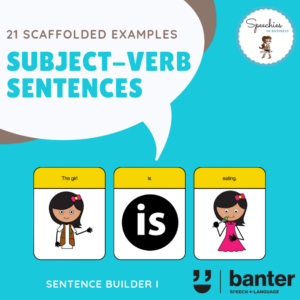
$5.99 including GST
This is the first in our series of sentence builders, focusing on Subject-Verb constructions, e.g. “The boy is swimming”.
This no-preparation pack is designed to help support people who need help with these sentences, and features high frequency, present tense verbs to help stimulate oral language development.
-
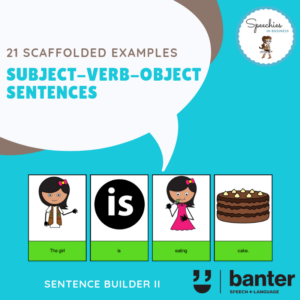
$5.99 including GST
This is the second in our series of sentence builders, focusing on Subject-Verb-Object constructions, e.g. “The boy is eating a pie”.
This no-preparation pack is designed to help support people who need help with these sentences, and features high frequency, present tense verbs to help stimulate oral language development.
-
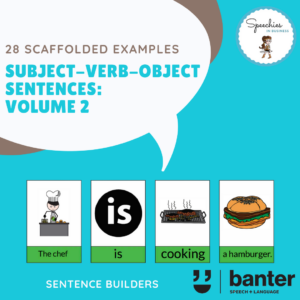
$5.99 including GST
This is the second volume of our Subject-Verb-Object (SVO) sentence builders, e.g. “The boy is eating a pie.”. In this 18-page resource we cover additional SVO sentences, and give students the opportunity to practice constructing their own SVO sentences.
This pack can be used for drill-play activities, with reinforcement given for correct productions. Alternatively, laminate and cut up the cards for sentence construction sorting games.
-
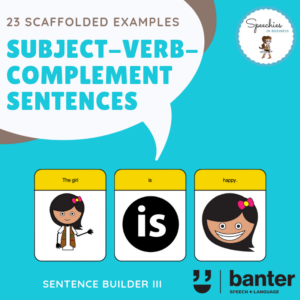
$5.99 including GST
This is the third in our series of sentence builders, focusing on Subject-Verb-Complement constructions, e.g. “The boy is smart.”.
Typically developing children usually acquire this sentence structure at around the age of 2-2 1/2 years of age, although people who are learning English as a second language and/or have a communication disorder may struggle to grasp the pattern.
This no-preparation pack is designed to help support people who need help with these sentences, and features high frequency, present tense verbs to help stimulate oral language development.
-
Sale!
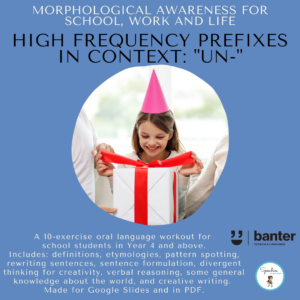
$6.99 Original price was: $6.99.$0.00Current price is: $0.00. including GST
In this 19-page resource, we teach students that the prefix “un-” means “not” or the “opposite of”.
It contains 10 activities designed to teach and consolidate this knowledge. Activities include:
-
- teaching the definition and etymology of the prefix, “un-”, for comprehension and spelling;
- a procedural word learning writing activity;
- auditory bombardment -listening to “un-” words in sentence context;
- a highlighting activity: spotting the prefix in sentences;
- a sentence rewriting exercise requiring students to replace words with a word using the “un-” prefix;
- a sentence formulation exercise with semantic constraints: making original sentences using words with an “un-” prefix;
- a divergent naming exercise: creative thinking using words with “un-” prefixes;
- a general knowledge investigation;
- a verbal reasoning/persuasive writing exercise: generating pros and cons for arguments including “un-” words; and
- a story-making exercise with “un-” words.
This resource is one of nine modules covering the most frequent prefixes uses in English. Fully scripted, the module is is suitable for one-to-one, small group and whole class instruction; and can be downloaded in PDF and Google Slides format.





